20 Photos from 20 Kilometers: A Solo Hiker’s Guide to the Tongariro Alpine Crossing
The Tongariro Alpine Crossing is one of the most iconic day hikes in the world. Traversing a dramatic volcanic landscape shaped by millennia of eruptions, this 20-kilometer trek takes you through sacred Maori lands, smoking craters, emerald lakes, and alpine meadows. I hiked it solo — and by the end, I was convinced I’d walked through a fantasy novel, a geology textbook, and a boot camp all in one.
The Tongariro Alpine Crossing —1 photo per km
KM 1: I began from Mangatepopo carpark. The track is flat and well-maintained, giving away nothing about the drama waiting ahead.
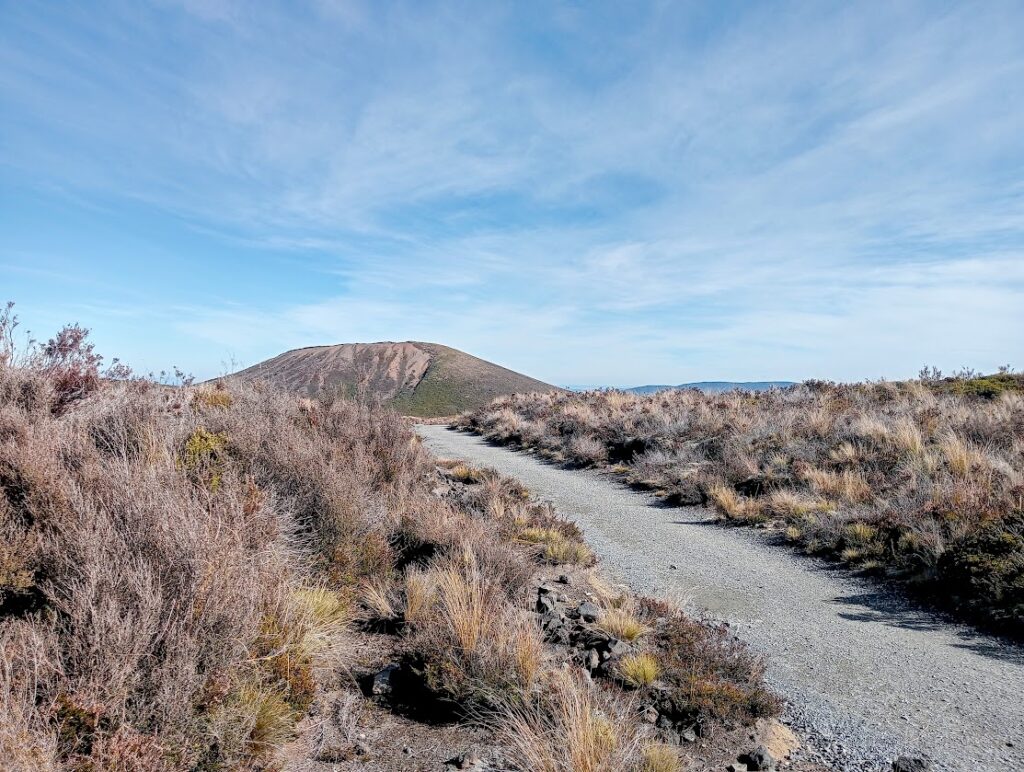
KM 2: Boardwalks stretch out over wetlands, while Mount Tongariro, considered tapu (taboo) by the Māori, commands attention with its massive presence.
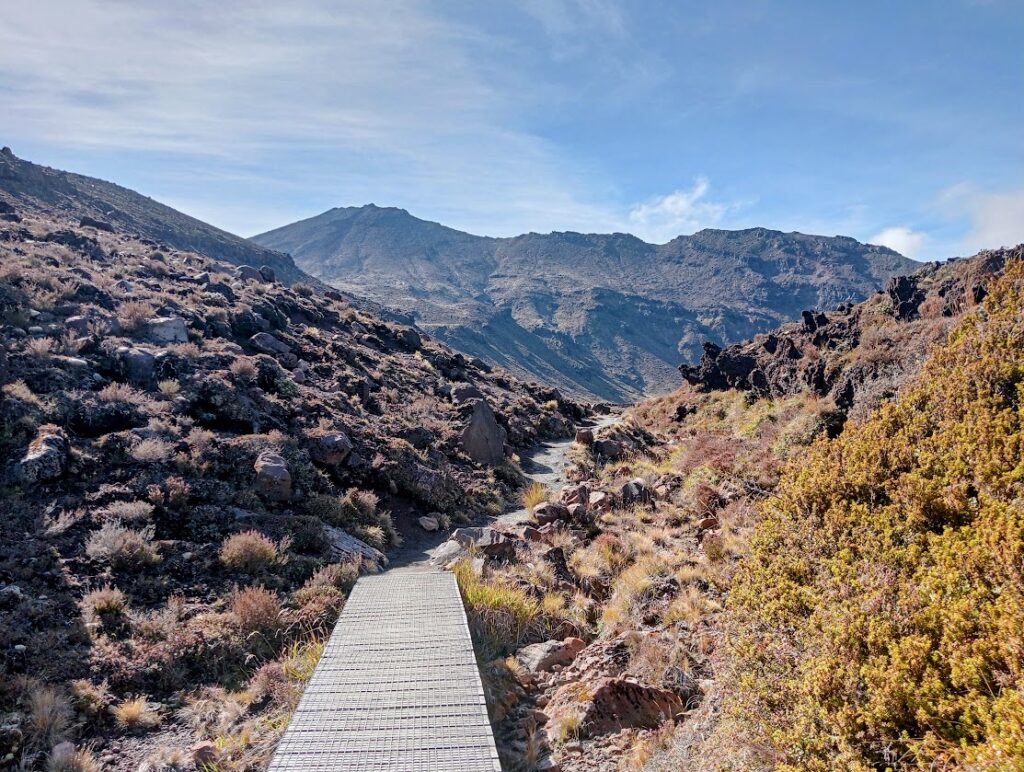
KM 3: The path begins its first steady climb, winding into a landscape stripped bare by lava and time. Conversation among hikers quiets, replaced by the crunch of boots.

KM 4: Soda Springs! A last breather spot before the climb gets serious.
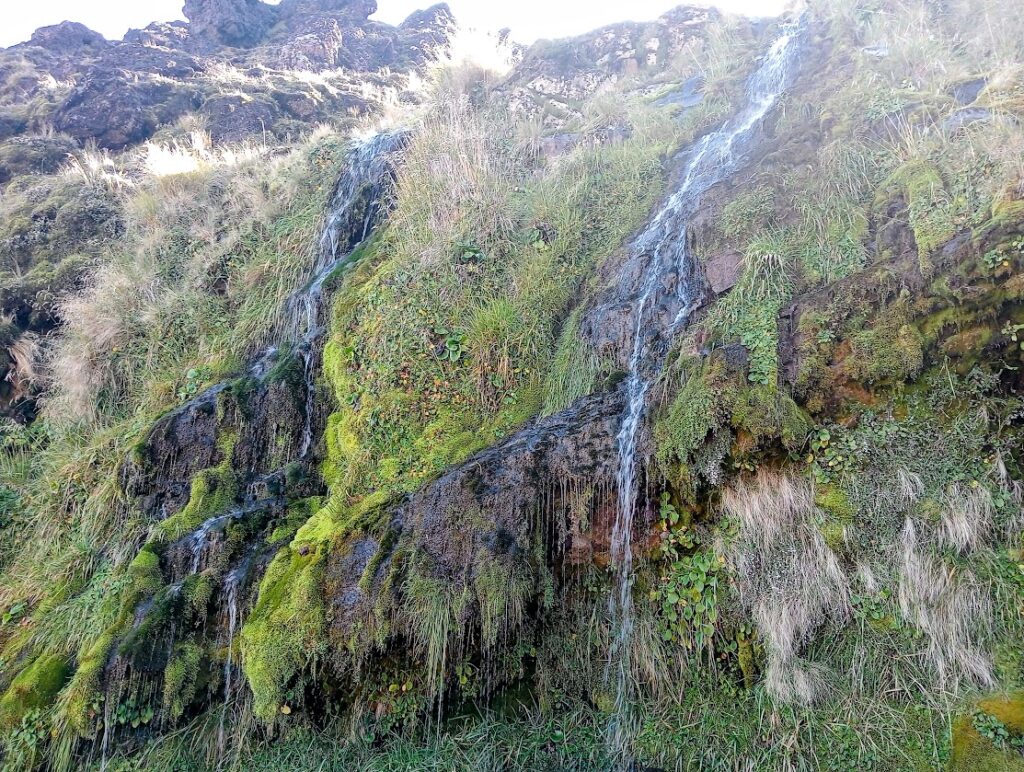
KM 5: The infamous Devil’s Staircase begins — a zigzagging climb that seems to go on forever. The wind picks up, the gradient sharpens, and so does your inner monologue: “Why am I doing this again?”
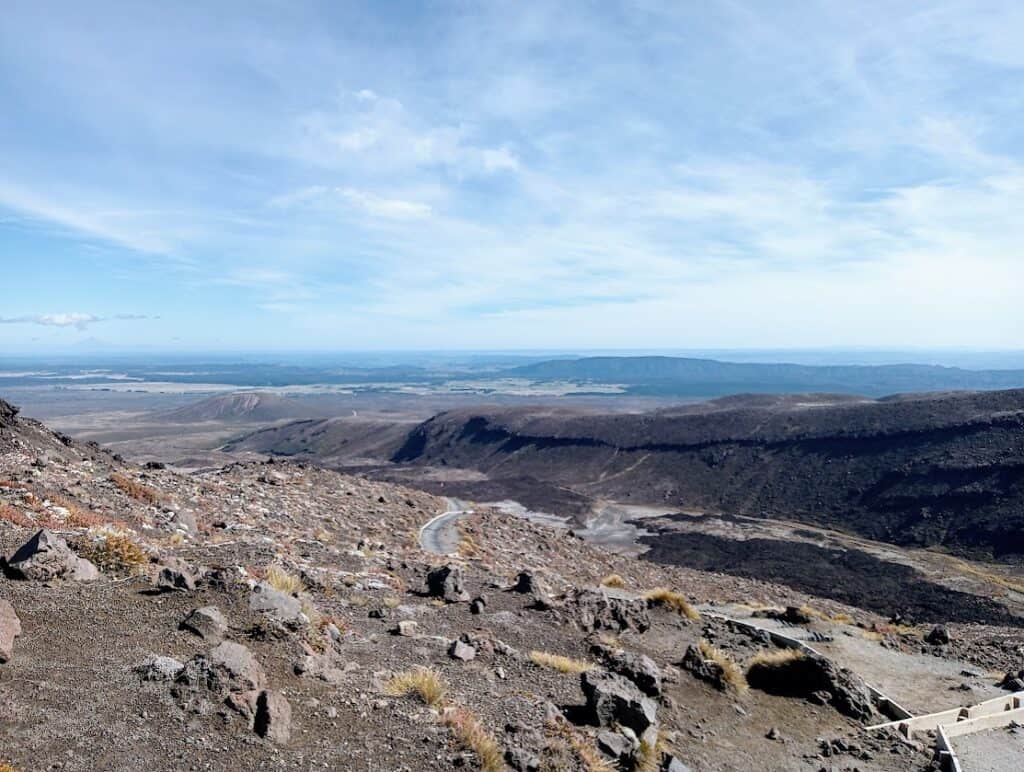
KM 6: Still climbing. I’m collecting volcanic rocks for my children’s geography class when I remember I can’t take them out of the country.
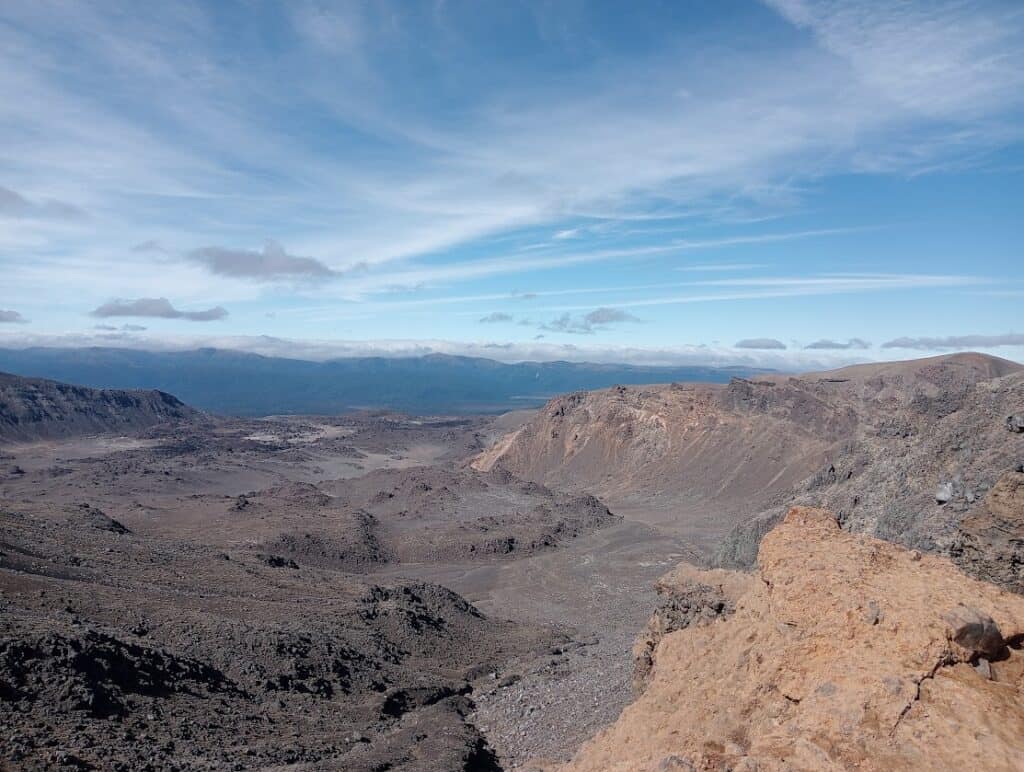
KM 7: South Crater. It feels like you’re walking on Mars, if Mars had wind strong enough to steal your hat.
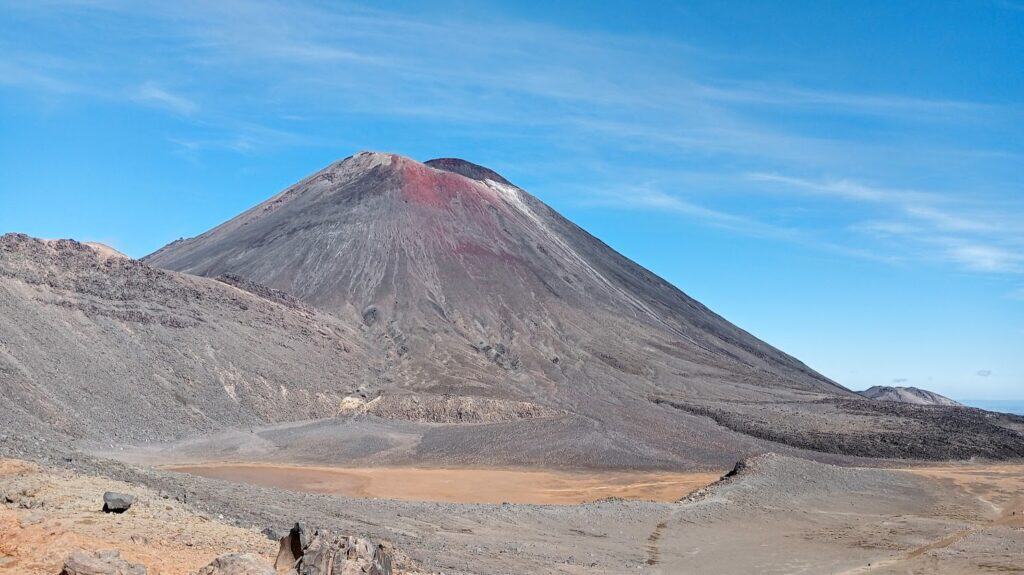
KM 8: Volcanic sand underfoot. No sound but the whistle of the wind. (And a group of adolescents howling and trying to livestream it on TikTok — but the internet is dodgy. Hehe.)
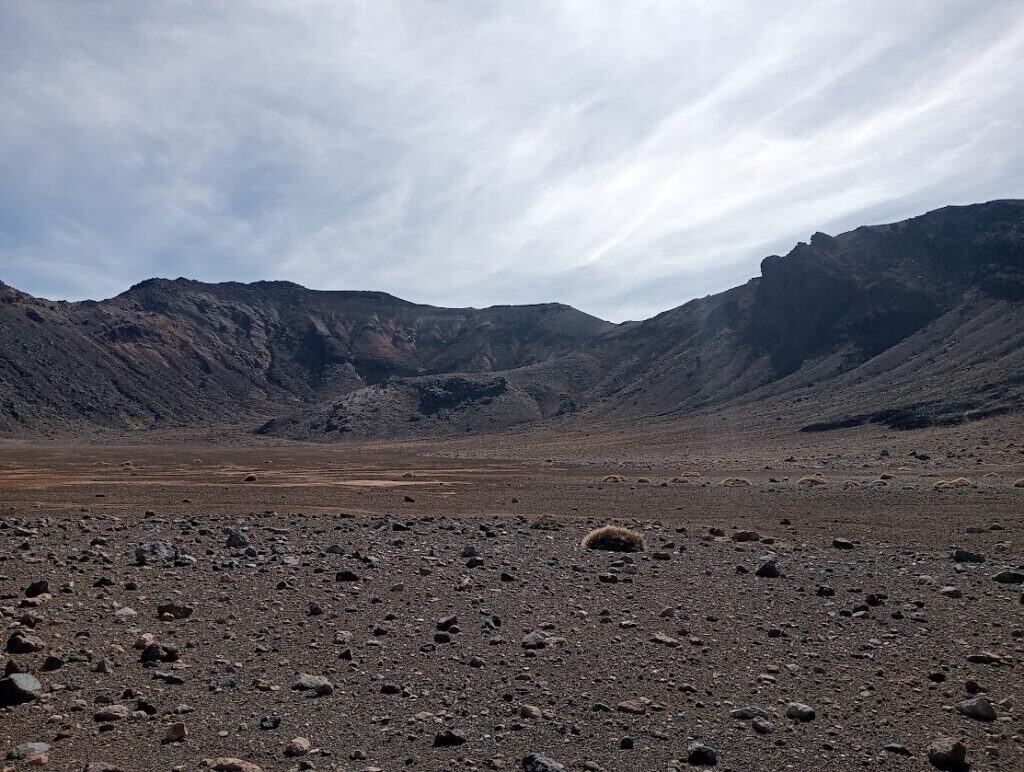
KM 9: The steep climb to Red Crater begins. My shoes from Thailand’s night market won’t do. I should be wearing good hiking boots.
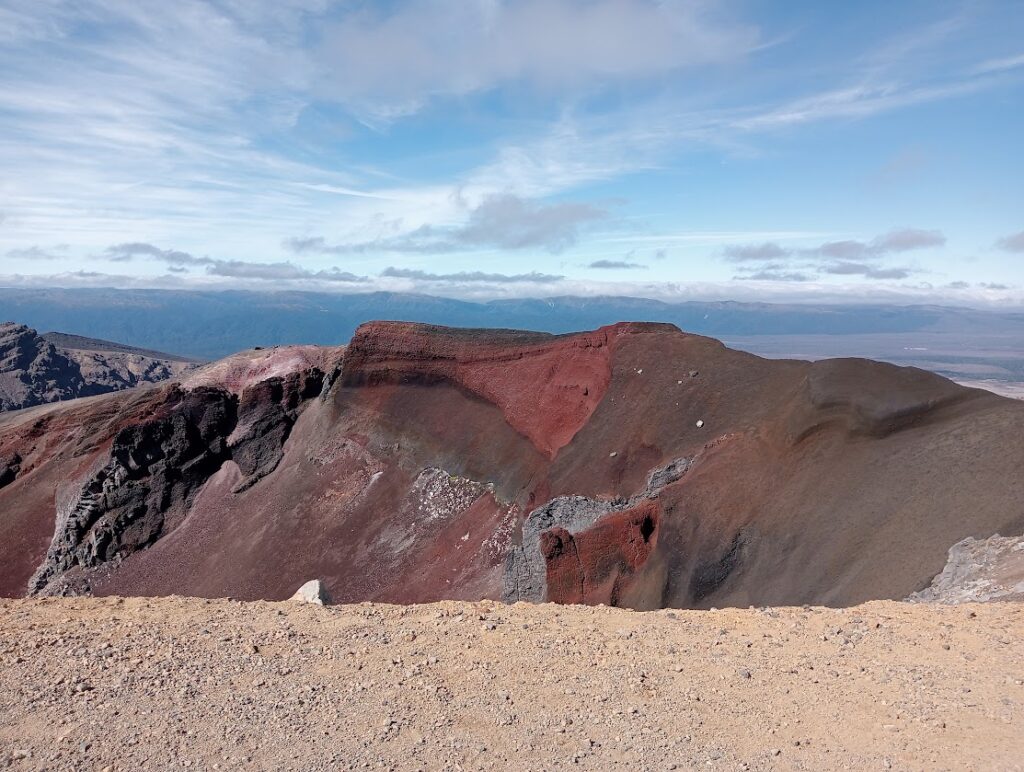
KM 10: Red Crater. Raw, and surreal. One of the most breathtaking spots — not just from the view, but also from the altitude.
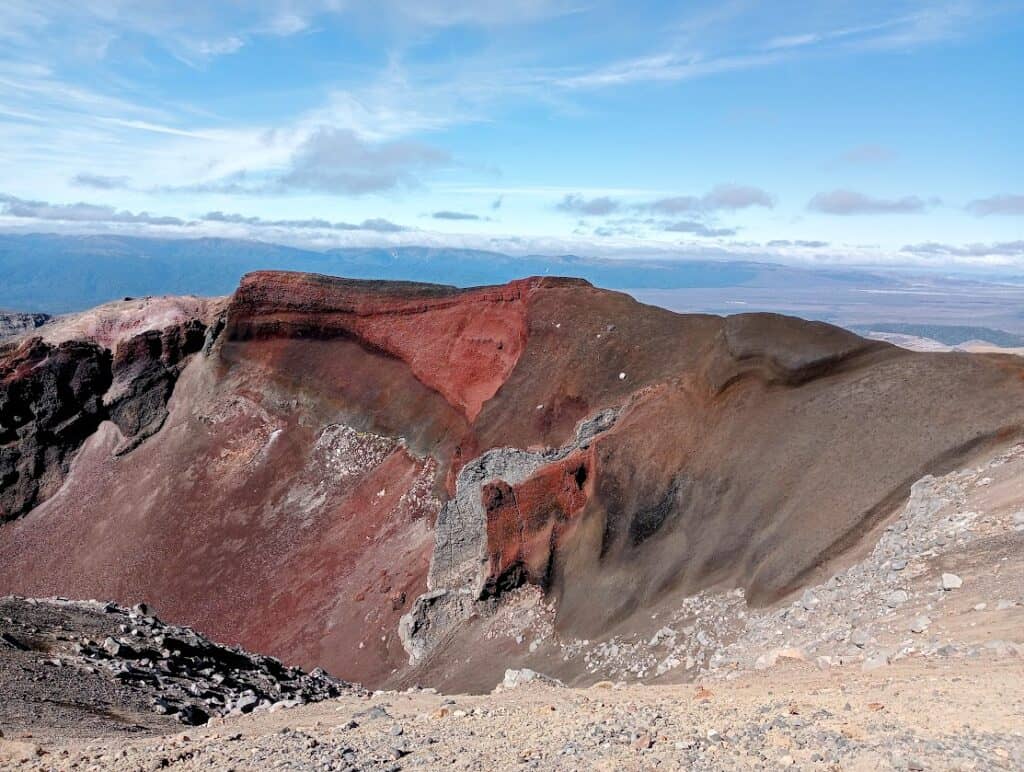
KM 11: Downhill on scree. There’s no way I can stay upright, so I just slide on my bottom — but oh well, so does everyone else.
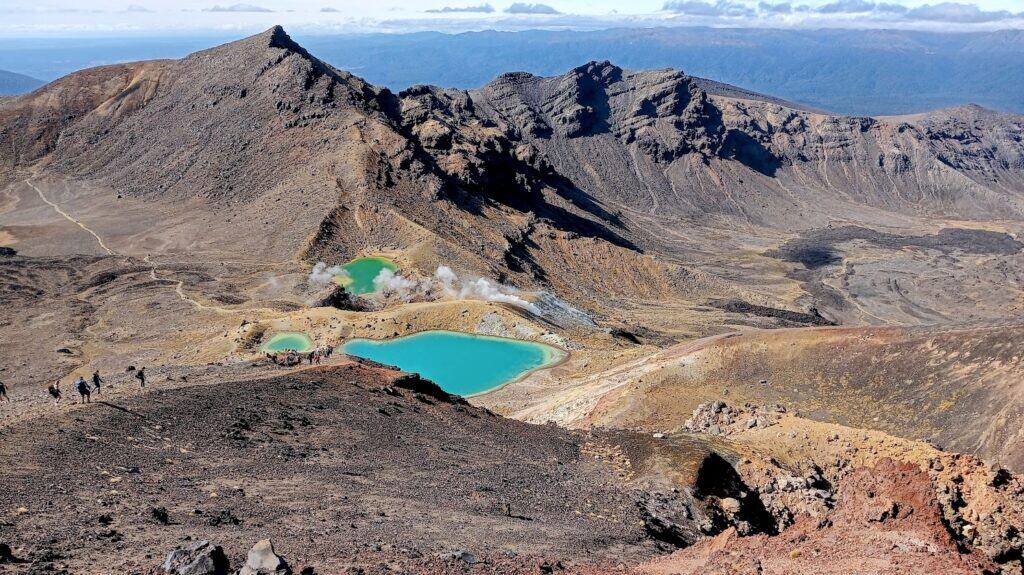
KM 12: Emerald Lakes! The cones and rods in my eyes tell me they’re more like turquoise — but spectacular nonetheless.
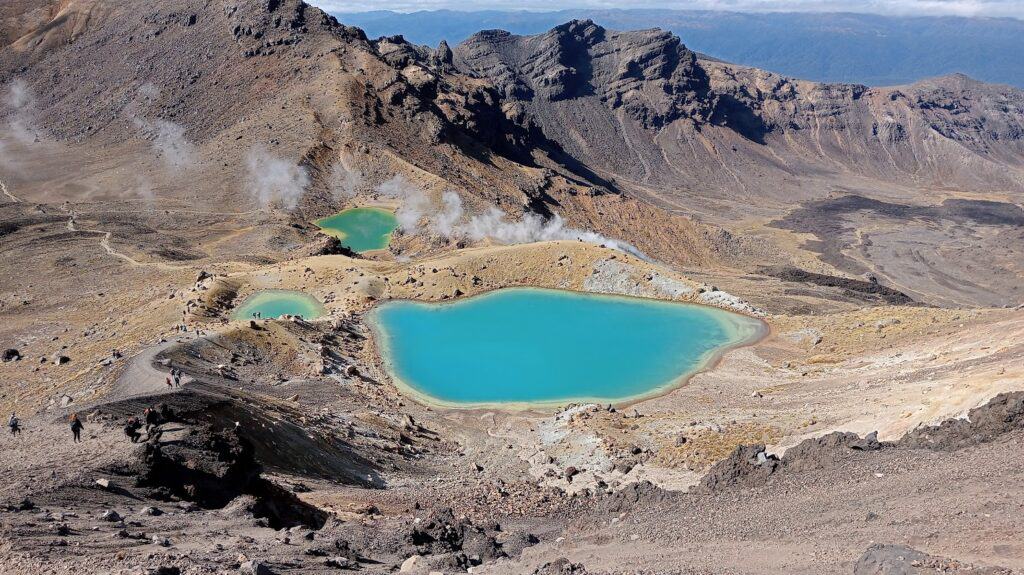
KM 13: Sulphur zone — smells like rotten eggs. I couldn’t resist the urge to leave the track and get closer to the source of the smoke. The belly of the Earth sounds like a hollow chamber, where a mythical machinist feeds the fire that belches out the white smoke.
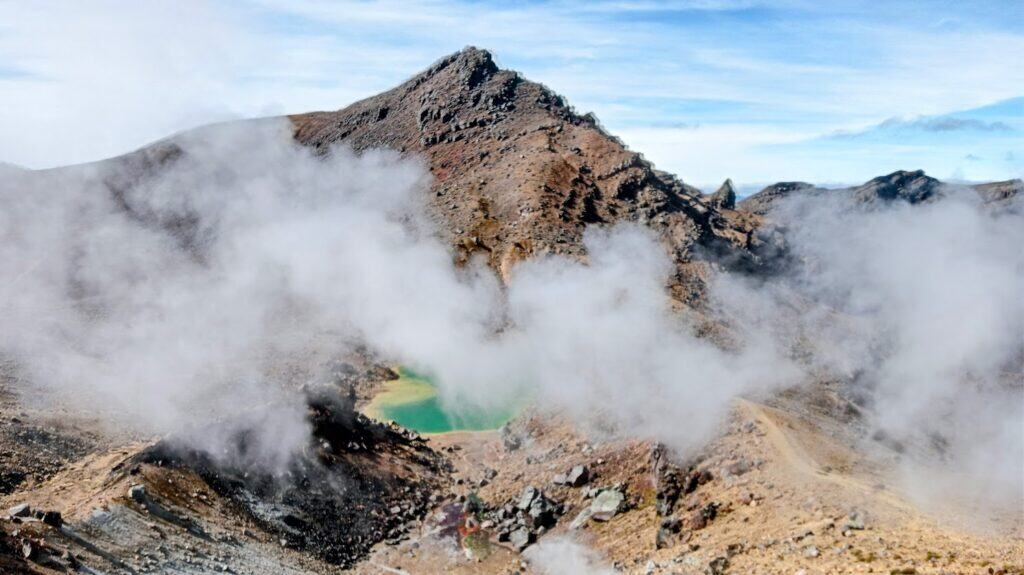
KM 14: Ridge walk with sweeping views. It is easily visible to the naked eye where the magma flowed out and solidified.
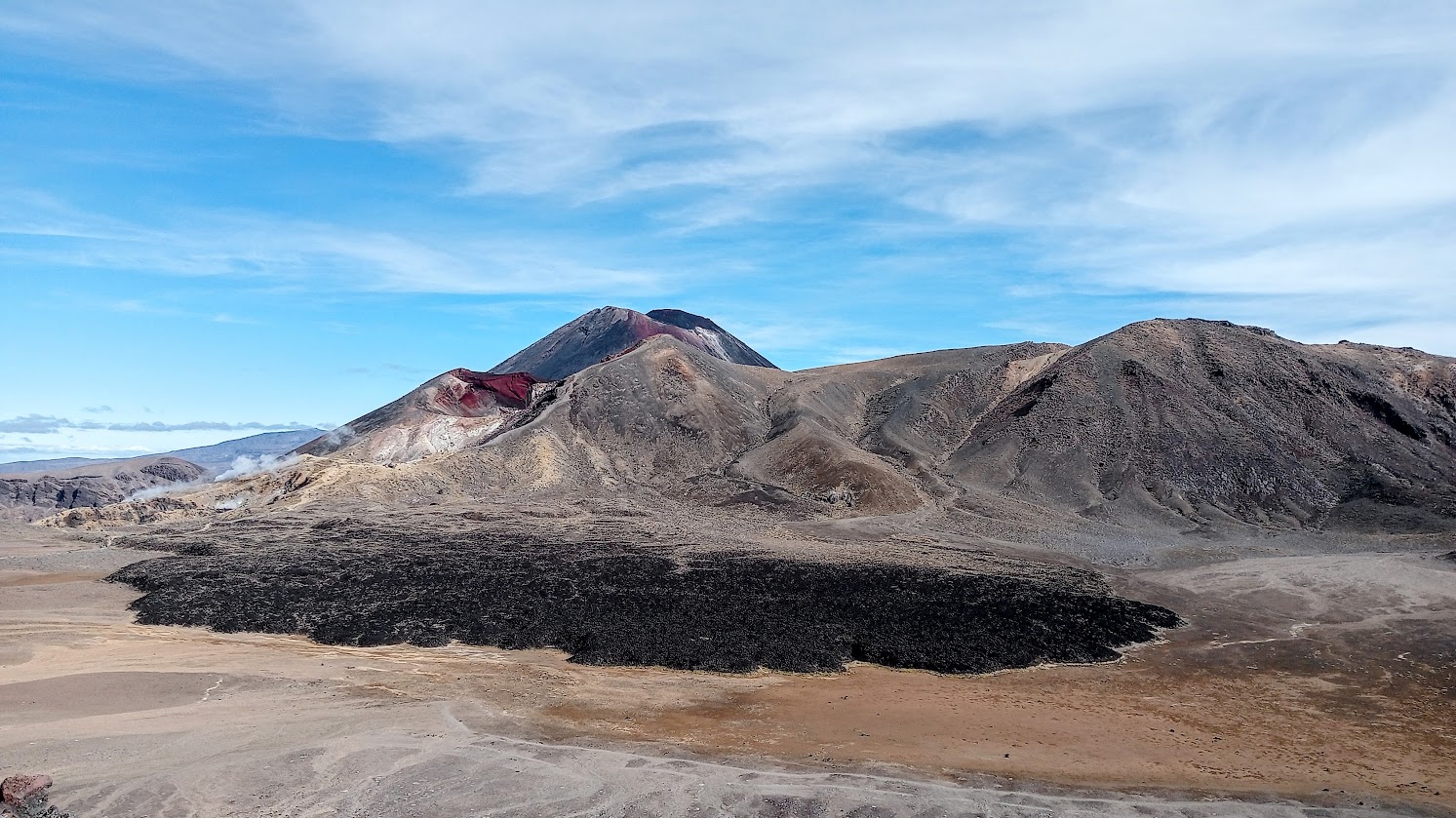
KM 15: Blue Lake. Sacred and serene. I was about to connect my alpha waves to Mother Earth when a group of loud Americans — who seemed to be military folks — trampled by, triumphantly shouting things like, ‘Yes, we can do it! It’s all downhill from now on! I burned 1,242 calories!’ Come on, guys.
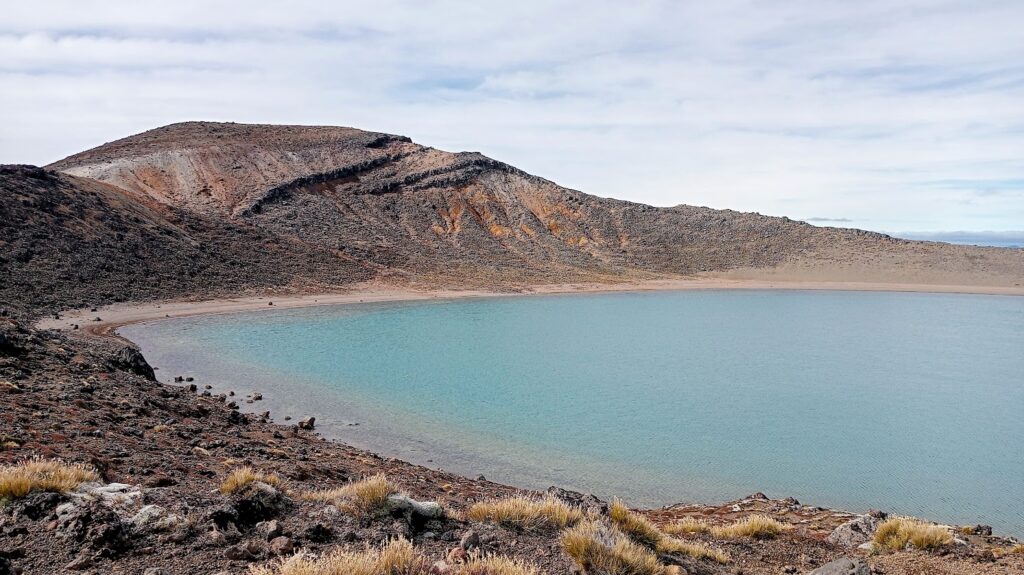
KM 16: The descent begins. Grasses appear. I realize I’m almost at the perfect antipode of another great hike I’ve done before: the “Camino de Santiago”.

KM 17: Lichens and mosses. The land is coming alive again. I catch myself grinning like an idiot.
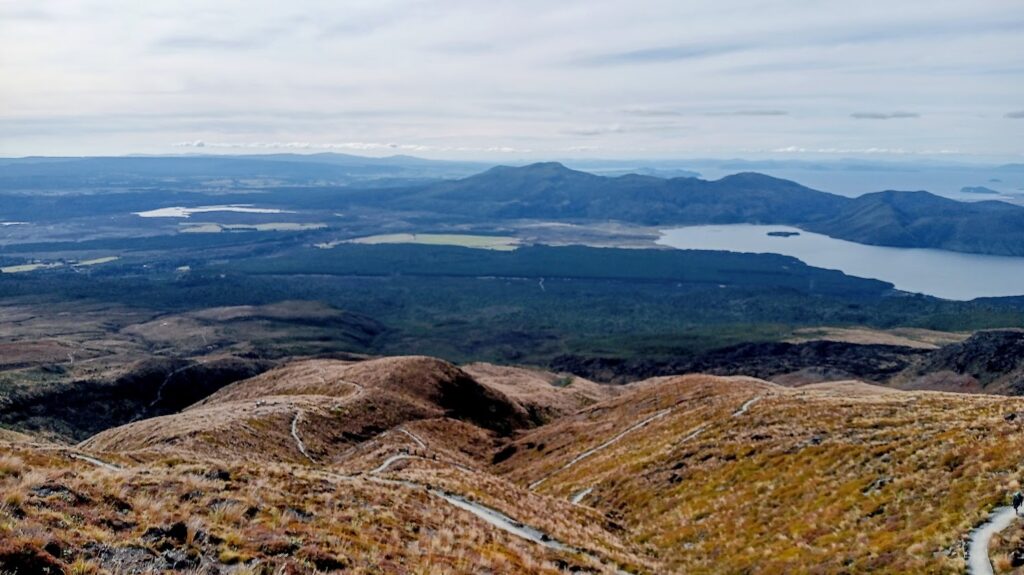
KM 18: Vegetation! Birdsong! It’s like I’m in a geography textbook: in 3 kilometers I’ve come from barren volcanic land through lichens and grass to a coniferous forest. I’m not tramping (Kiwi word for hiking) anymore, I’m strolling on a wooden walkway now. I’m approaching civilization.
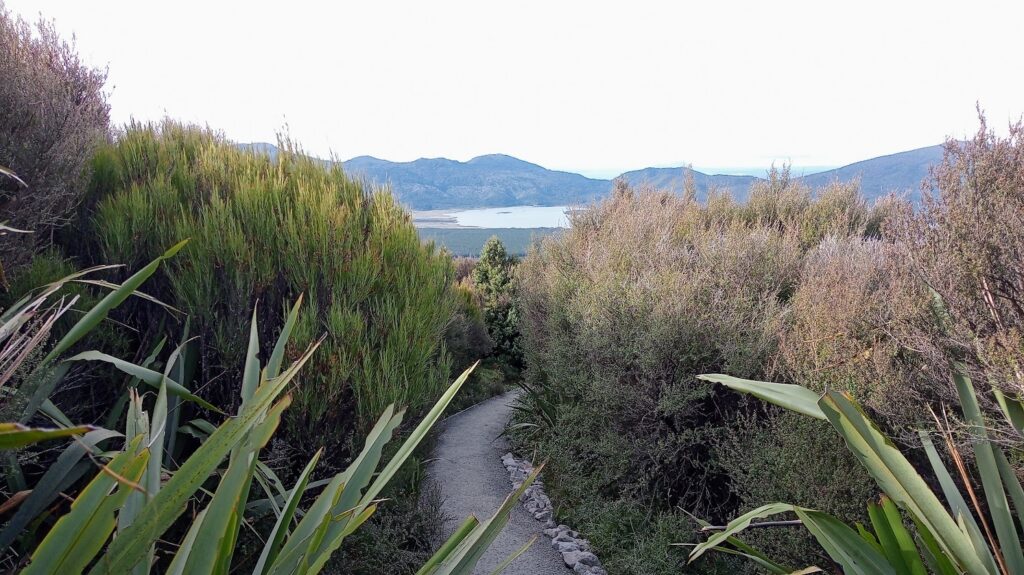
KM 19: The forest deepens. Yup, it looks like Middle Earth.
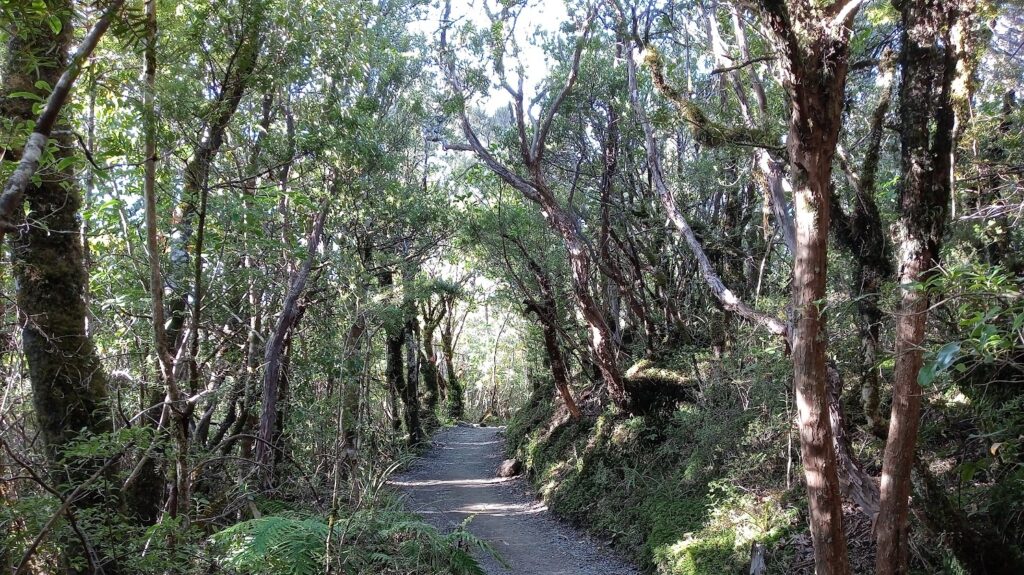
KM 20: Ketetahi carpark — the promised land. I’m dusty and triumphant.
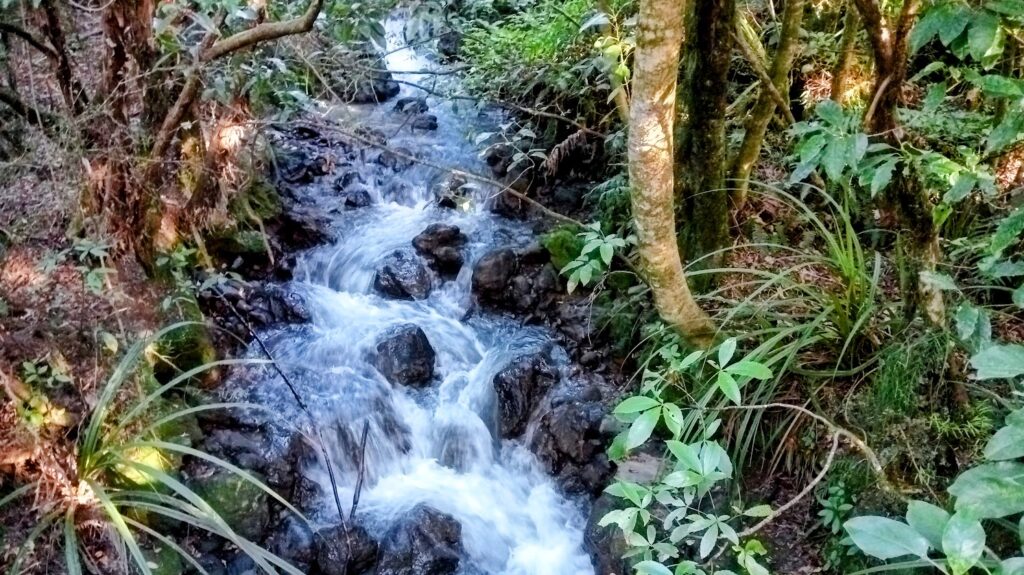
What I would do differently next time
- I would start earlier — I was among the last ones to leave from Mangatepopo carpark. I actually didn’t mind walking the whole Tongariro Alpine Crossing alone, but had the weather turned bad, it could have been dangerous to be out there on my own.
- I would take extra socks. During the downhill skid after the Red Crater, my running shoes filled up with volcanic ash, and my socks kind of solidified.
- Speaking of which: hiking boots would have been better.
It was more than just a hike
It was a solo epic: one-part pilgrimage, one-part comedy of errors, and entirely unforgettable. Walk it, and you’ll see — some of the best conversations are the ones you have with yourself on the trail.




